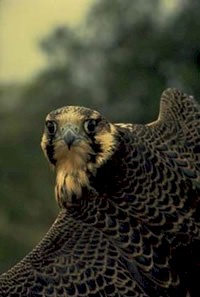|
|
| |

Credit: Craig Koppie/USFWS
The valley is a major corridor for migrating birds and bats. |
|
Year-long study assesses feasibility of new national wildlife refuge in Pennsylvania
The Service has evaluated the potential for establishing a new national wildlife refuge in eastern Pennsylvania, an area rich in fish and wildlife resources. The Cherry Valley National Wildlife Refuge Draft Feasibility Study and Environmental Assessment is now available for public review and comment. More... |
|
|
|
|

Credit: Julie St. Louis/USFWS
Signing the urban bird treaty are, from left, in front row, Marvin Moriarty, Northeast Regional Director, U.S. Fish and Wildlife Service; Adrian Benepe, Commissioner, New York City Department of Parks & Recreation; in back row, Glenn Phillips, Executive Director New York City Audubon; Deputy Interior Secretary Lynn Scarlett; and Al Caccese, Executive Director Audubon New York.. |
|
New York City signs urban bird treaty
New York City has signed an Urban Conservation Treaty for Migratory Birds, committing to restore, conserve and protect valuable bird habitat and to provide education and training about birds. City parks provide an essential urban sanctuary – resting and breeding grounds for thousands of migrating birds. |
|
|
| |
|
|
|
| |
|
|
|
| |

Credit: NOAA-Fisheries
Atlantic salmon. |
|
Expanded Atlantic salmon protection proposed
The U.S. Fish and Wildlife Service and NOAA-Fisheries are proposing to expand Endangered Species Act protection for wild Atlantic salmon in Maine as far as the Androscoggin River, including the entire Kennebec and Penobscot rivers. This year, from the Androscoggin north to the Dennys River, the area proposed for protection, only 2,000 salmon have returned to spawn.
 More on Gulf of Maine Atlantic salmon protection More on Gulf of Maine Atlantic salmon protection
|
|
|
| |
|
|
|
|
|
|